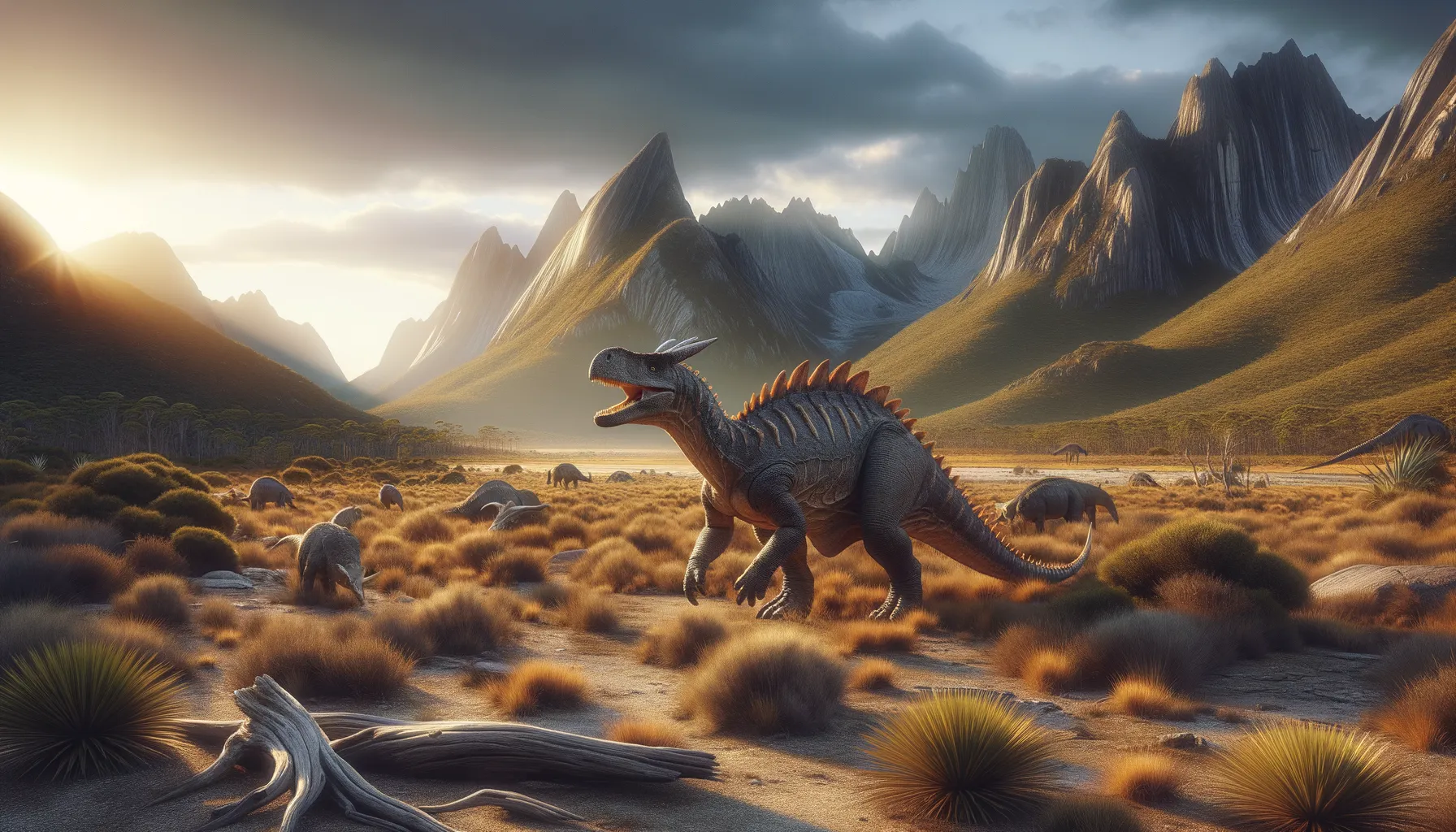
Minmi
Armor-plated crusader of ancient Australia.
Period
Cretaceous
Length
Roughly 3 meters in length.
Height
Approximately 1 meter tall at the hips.
Weight
Estimated to weigh around 300 kilograms.
Minmi was a small, armored dinosaur that lived during the early Cretaceous period. Known for its bony armor, it roamed the ancient landscapes of what is now Australia. Though not large, it was well-protected against predators of its time. Its remains have provided significant insights into the diversity of ankylosaurian dinosaurs in the Southern Hemisphere.
Diet
Minmi was an herbivore, primarily feeding on low-lying vegetation. Its teeth were adapted for grinding tough plant material, allowing it to process a variety of plants efficiently.
Hunting
As an herbivore, Minmi did not engage in hunting behavior. It relied on its armored body for defense rather than pursuit.
Environmental challenges
Minmi faced numerous environmental challenges, including evolving predatory threats requiring its distinctive armor for protection. It had to adapt to variations in plant availability due to changing climates. The dense forests in which it lived would occasionally present challenges in finding sufficient food during dry spells. Additionally, its relatively slow movement made it vulnerable to sudden environmental dangers.
Speed
Minmi was relatively slow due to its heavy armor.
Lifespan
Estimated to live for about 10 to 20 years.
First discovery
Discovered in 1964 in Queensland, Australia.
Fun Facts
- Minmi was a small, armored dinosaur that lived about 119 to 113 million years ago during the Early Cretaceous period.
- Unlike many other armored dinosaurs, Minmi had bony plates that extended down its limbs, offering extra protection.
- Minmi was named after a place in Australia called Minmi Crossing, where its fossils were first discovered in 1964.
- This dinosaur was relatively small, measuring around 10 feet in length, making it one of the smaller ankylosaurs.
- Minmi was an herbivore, which means it primarily ate plants and likely used its armored body to shield itself from predators.
- Fossils of Minmi were initially discovered in a sparse condition, puzzling paleontologists for years about its full appearance.
- Minmi's uniqueness extends to its name as it's one of the shortest names given to a dinosaur, making it memorable and easy to pronounce.
Growth and Development
Minmi, like other dinosaurs, hatched from eggs. Its growth involved developing a strong, armored body for protection. Juveniles likely grew rapidly to minimize their vulnerability to predators. As they matured, their body armor became more pronounced, providing ample defense against threats.
Habitat
Minmi inhabited lush, forested areas where its diet of ferns and other vegetation was abundant. It lived near rivers and creeks, which provided consistent access to water and food sources. These environments also offered shelter and protection from larger predators.
Interaction with other species
Minmi interacted with diverse species, many of which were potential predators. Its armored protection helped deter attacks from carnivorous dinosaurs. It coexisted with other herbivores, competing for similar plant resources without significant conflict. Social interactions within its own species might have involved group foraging and sharing protective strategies.
Natural lifespan
Minmi's natural lifespan is estimated to be between 10 and 20 years.
Reproduction
Minmi reproduced by laying eggs, likely in nests constructed on the ground. Parents may have guarded their eggs from predators, but it remains uncertain how much parental care was offered post-hatching. The developing embryos absorbed nutrients from a yolk sac while inside the egg, emerging ready to fend for themselves.
Social behaviour
It's not entirely clear how social Minmi might have been, but there is potential evidence of gregarious behavior. Fossilized trackways suggest the possibility of group movement, which could imply some level of social interaction. They might have engaged in cooperative behaviors, such as group foraging, to better protect young individuals from predators.
Fossil locations
Minmi fossils have been primarily found in Queensland, Australia, confirming its presence in that region during the early Cretaceous period. The initial discovery in 1964 led to more extensive searches and additional findings. Specimens recovered have contributed to understanding the distribution and evolution of ankylosaurian dinosaurs in the Southern Hemisphere.
